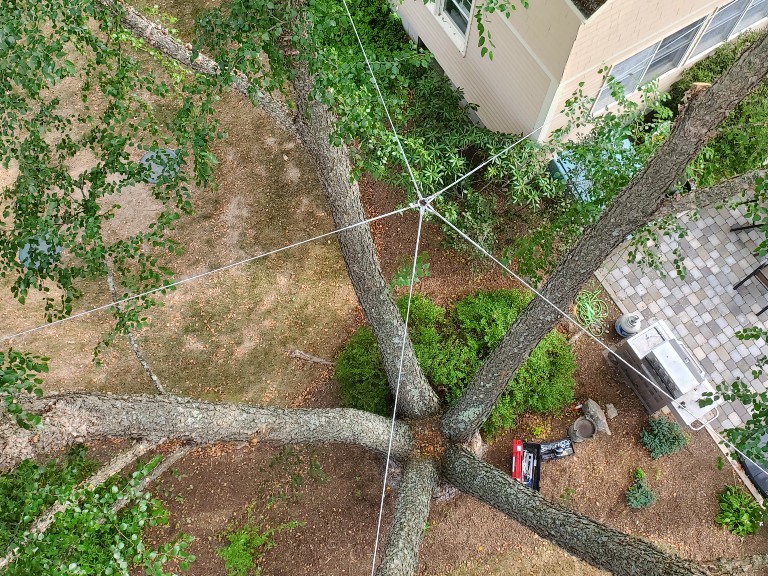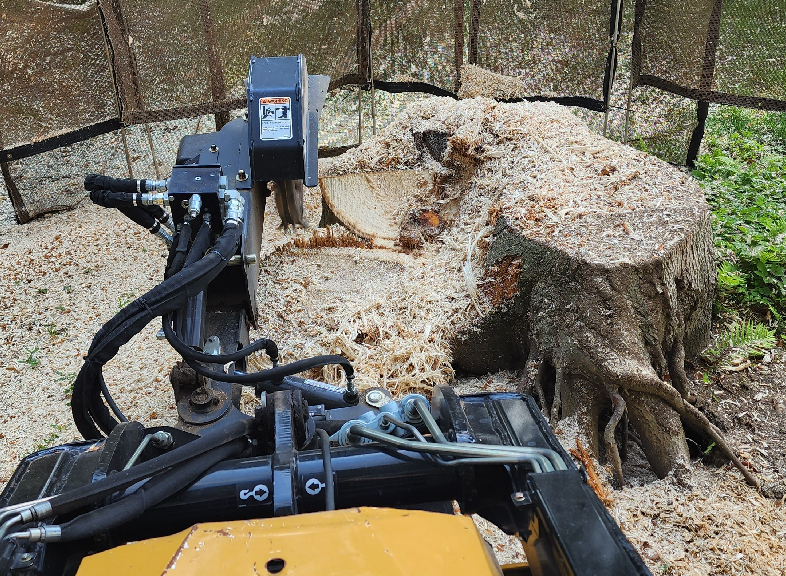Trees are a beautiful and valuable part of any landscape, but they are also vulnerable to structural damage. Storms, heavy winds, and natural growth patterns can cause trees to split, leaving homeowners wondering whether their tree can be saved. One effective solution is tree cabling, a method used to support and stabilize damaged trees. But can tree cabling truly save a split tree? Let’s dive into what you need to know.
Understanding Tree Splitting: Why It Happens
A tree may split for several reasons, and identifying the cause is the first step in determining whether cabling is a viable solution.
Common Causes of Tree Splitting:
Storm Damage – Strong winds, heavy snow, or ice accumulation can cause a tree to crack or split.
Weak Unions – Some trees naturally develop weak branch attachments, making them prone to splitting.
Overgrown Limbs – Large, heavy branches can put excessive strain on the trunk, leading to structural failure.
Disease & Decay – Fungal infections, rot, or internal decay can weaken the tree, making it more susceptible to splitting.
If your tree has recently split, quick action is essential to prevent further damage and improve its chances of survival.
How Tree Cabling Works
Tree cabling is a proactive and corrective technique used to support weak or damaged trees. This process involves installing high-strength steel cables or synthetic support systems between major branches to reduce strain and promote stability.
What Tree Cabling Does:
Provides additional support to prevent further splitting.
Redistributes weight to reduce stress on weak areas.
Encourages healing by keeping the split sections together.
Extends the tree’s lifespan by preventing hazardous breakage.
Cabling is often combined with tree bracing, which involves using threaded rods to reinforce the tree from within.
Can a Split Tree Be Saved with Cabling?
The success of tree cabling depends on several factors, including the severity of the split, the tree’s overall health, and the location of the damage. Here’s how to determine whether your tree can be saved:
A Split Tree CAN Be Saved If:
- The split is fresh and has not fully separated.
- The tree is otherwise healthy, with no signs of significant decay or disease.
- The main trunk is still intact, with at least 50% of the bark remaining around the split.
- A professional arborist determines that cabling can successfully support the tree’s structure.
A Split Tree CANNOT Be Saved If:
- The split extends down into the main trunk, compromising the tree’s core strength.
- The tree shows extensive rot, disease, or insect damage.
- The split has been left untreated for too long, allowing decay or pests to worsen the damage.
- The tree poses a significant safety risk to people or property, requiring immediate removal.
The Importance of Professional Tree Cabling
While DIY tree cabling kits are available, improper installation can cause more harm than good. A professional arborist will:
Assess the severity of the split and determine if cabling is the right solution.
Use industry-grade materials that are strong and durable.
Position the cables correctly to provide maximum support without restricting tree growth.
Monitor the tree over time to ensure it remains stable and healthy.
Preventing Future Tree Splitting
Even if your tree has not yet split, preventative cabling can protect weak limbs and extend the life of your tree. Here are some ways to minimize the risk of splitting:
Regular Pruning – Remove weak, overgrown, or damaged branches to reduce weight and balance the tree’s structure.
Routine Health Inspections – Check for signs of decay, disease, or structural weakness.
Early Intervention – If a tree shows signs of stress, consult an arborist before damage occurs.
Strategic Planting – When planting new trees, choose species that are less prone to splitting and plant them in locations with proper wind protection.
Conclusion: Should You Consider Tree Cabling?
Tree cabling is a highly effective method for saving split trees when applied correctly. If your tree has recently split but remains structurally sound, cabling can provide the support needed for healing and long-term stability. However, it’s crucial to act quickly and consult a professional arborist to determine the best course of action.
At Twin Oaks Tree Care, we specialize in tree cabling, bracing, and preservation services to help extend the life of your trees. If you have a split tree or suspect structural weakness, contact us today for a professional assessment!


